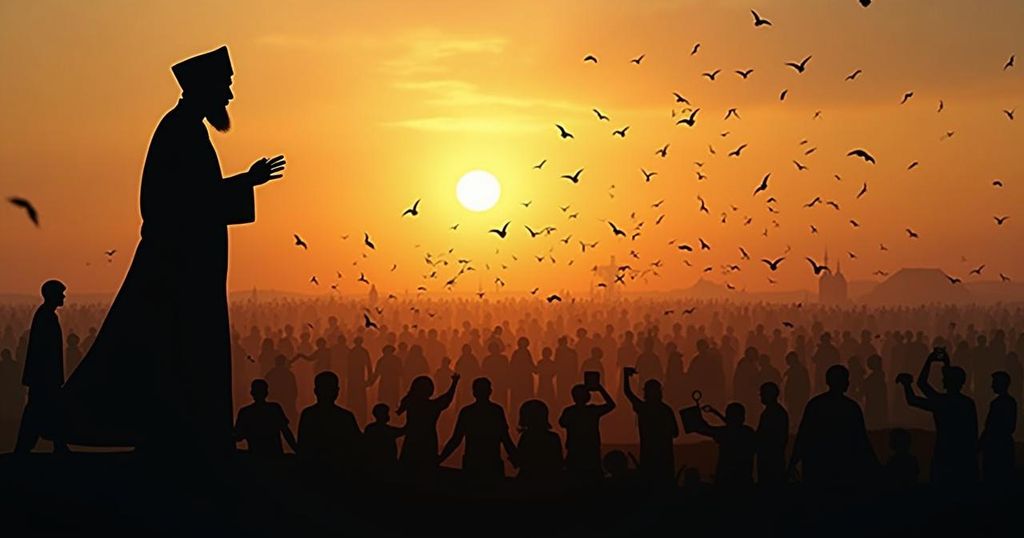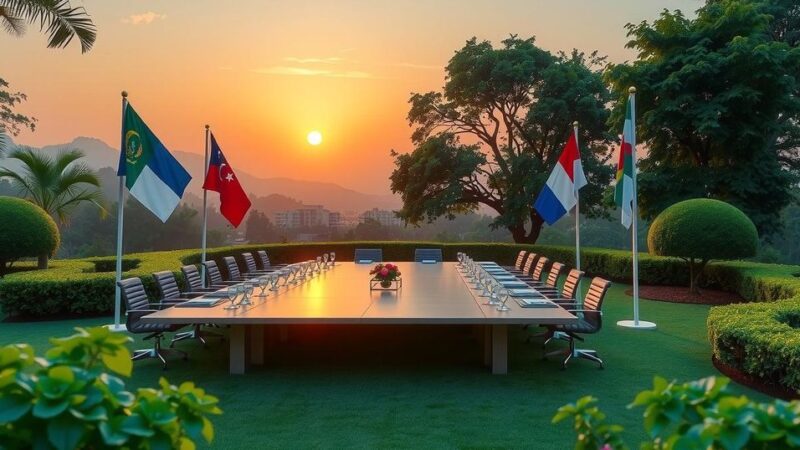The conflict in Sudan is fueled by clashes between the military and the RSF, primarily over the integration of paramilitary forces into the regular military. General Hemedti, leader of the RSF, has leveraged his background and military acumen to amass significant power, illustrating a shift in the political dynamics of Sudan. His rise reflects both the historical marginalization of certain groups and the complications arising from Sudan’s fractured political landscape.
The conflict in Sudan has escalated dramatically due to a power struggle between the military and the powerful paramilitary group known as the Rapid Support Forces (RSF). Central to this contention is the contentious issue of integrating the RSF into the regular armed forces, a pivotal condition of a transition agreement that remains unsigned despite both parties’ tacit adherence to it since 2021. General Mohamed Hamdan Dagolo, commonly referred to as Hemedti, leads the RSF. His significant influence illustrates a broader pattern of Sudan’s tumultuous political landscape, deeply entwined with the history of conflict in regions like Darfur. Hemedti’s background is telling; originating from the marginalized peripheries of Darfur, he was initially involved in the violent militia known as the Janjaweed, instrumental in Khartoum’s counterinsurgency efforts during the Darfur war. Despite lacking formal education, Hemedti adeptly parlayed his military career into substantial political power. He merged commercial interests with military prowess, transforming the RSF into a formidable force that eclipses the crumbling Sudanese state. Al-Bashir, Sudan’s former president, recognized Hemedti’s loyalty and elevated him within the military hierarchy, further cementing his influence. Through strategic acquisitions of wealth, particularly from gold mines and external military contracts, Hemedti positioned himself as a dominant player in Sudan’s political and economic arenas. This mercenary model facilitated by external alliances suggests that the RSF may operate beyond Sudan’s borders, echoing a familiar narrative seen in other regional conflicts. Meanwhile, the traditional Sudanese army has morphed into an extravagant institution devoid of effective operational units, relying instead on paramilitary forces for actual combat engagements. The socio-political landscape of Sudan grapples with historical power dynamics, predominantly centered around Khartoum. Hemedti’s rise symbolizes a departure from conventional leadership, stirring fears among the riverain elites of a potential return to tyrannical rule. His ascent to power embodies both the culmination of long-ignored grievances from marginalized communities and a retribution against a political system that previously marginalized these groups. In summary, the unrest in Sudan represents a complex interplay between historical marginalization, the rise of powerful paramilitaries, and the failings of traditional governance structures. Hemedti’s emergence as a key figure amidst this turmoil underscores the dissected nature of contemporary Sudanese politics, revealing a reality where mercenary-like practices dominate the security landscape and where long-standing societal tensions threaten the fragile stability of the nation.
The ongoing conflict in Sudan is largely the result of tensions between the Sudanese military and the RSF. This struggle is rooted in a disagreement over the integration of paramilitary forces into the national military framework, which was outlined as part of an unfinished transition agreement after the overthrow of President Omar al-Bashir. The RSF, under the leadership of General Hemedti, has grown in power significantly over the past decade, moving from the peripheries of Sudanese society to the center of its political landscape. The RSF originated from the Janjaweed militia known for its role in the Darfur conflict, which has left deep scars on Sudan’s social fabric. Throughout his rise, Hemedti has employed tactics of strategic political alliances and economic ventures that further complicated the power dynamics in Sudan, as he capitalized on the State’s weakening grip on power.
In conclusion, the conflict in Sudan is a multifaceted crisis driven by unresolved historical grievances, the rise of the RSF, and the challenges of integrating various military factions into a unified force. General Hemedti’s ascent to power represents both a reaction to longstanding marginalization and a significant shift in Sudan’s political landscape. The struggle for dominance between the military and the RSF has precipitated a civil war, highlighting the precarious nature of Sudan’s ongoing political transition and raising questions about the future of governance in the nation.
Original Source: www.thedailystar.net






